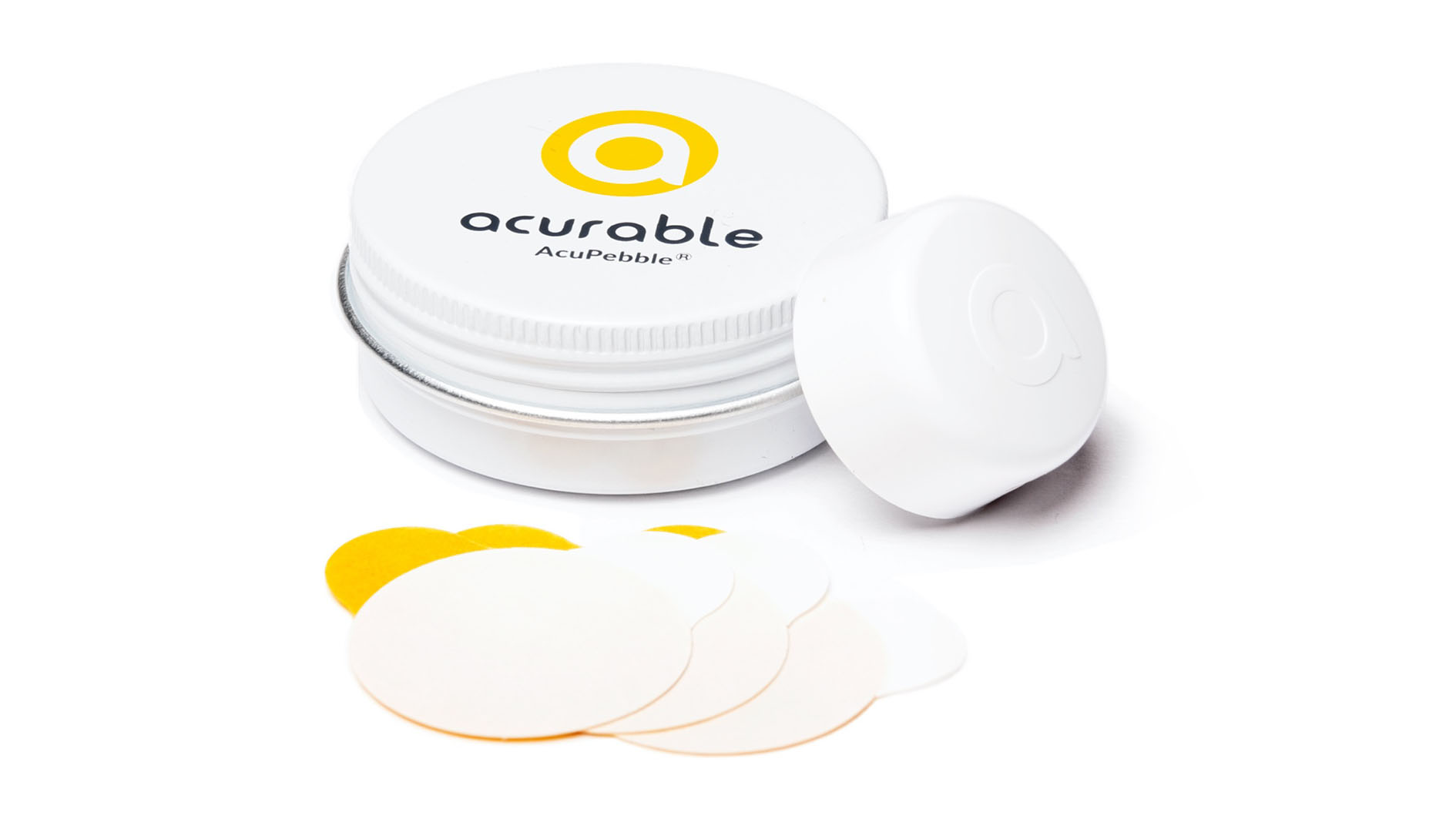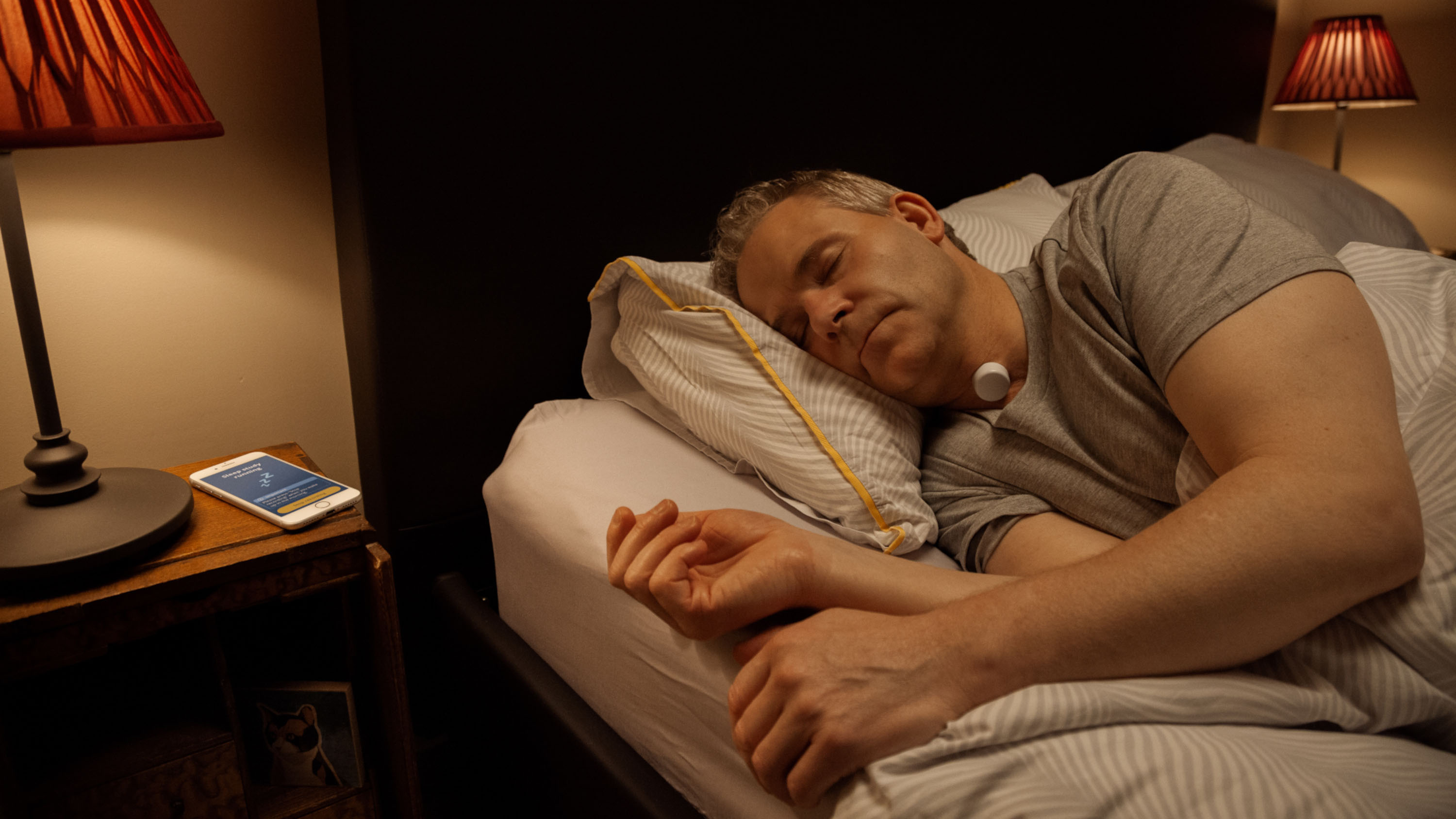
A new sleep apnea detection device, currently being trialled by the UK’s University of Warwickshire, could drastically speed up diagnosis of Obstructive Sleep Apnea, helping people to receive vital treatment much faster.
The AcuPebble is a non-invasive pebble-sized device that sits on the patient’s throat, where it records sleep data (captured during sleep) directly to the user's smartphone. This data is then sent to the patient’s doctor for analysis.
Developed by Professor Esther Rodriguez-Villegas, Director of Wearable Technologies at Imperial College, London, and founder of medtech company Acurable, the AcuPebble could dramatically slash sleep apnea diagnosis waiting times and revolutionise the diagnosis process entirely.
Backing from the NHS means that the AcuPebble could soon be widely available in the UK, while FDA clearance in May of last year means that this pioneering sleep apnea detection wearable will soon be heading to the US too.
How the AcuPebble detects obstructive sleep apnea
Currently, getting a sleep apnea diagnosis requires a lengthy process that, depending on your location, often requires a doctor referral and a complex overnight sleep assessment. It is estimated that as many as 85% of Obstructive Sleep Apnea sufferers worldwide have not yet received a diagnosis.

In contrast, the non-invasive AcuPebble is designed to detect Obstructive Sleep Apnea in your own home without you having to attend a clinic. The adhesive-backed AcuPebble is placed at the base of the neck, where it records respiratory sounds generated by you during sleep.
It also monitors your heart rate, breathing rate and oxygen levels. This data is then uploaded to a secure platform, where healthcare professionals can access it within minutes to evaluate your symptoms. All of this could drastically speed up diagnosis and treatment of sleep apnea.
The AcuPebble sleep apnea detection wearable is the first medical device of its kind to accurately detect respiratory biomarkers for Obstructive Sleep Apnea in patients. This alone makes it a quick and cost-effective alternative to current testing.
The AcuPebble has been undergoing a trial at the University of Warwickshire in the UK for the past two years, while an alternative version of the AcuPebble gained FDA clearance in the US early last year.

What is sleep apnea and what are the symptoms?
According to the CDC, sleep apnea is a sleep disorder that causes you to briefly stop breathing while sleeping and affects approximately 25 million adults in the US and 1.5 million adults in the UK. There are two different types of sleep apnea: Central Sleep Apnea and, more commonly, Obstructive Sleep Apnea.
Harvard Health explains that Obstructive Sleep Apnea occurs when the throat muscles relax during sleep, causing airways to become slightly or completely blocked. Once oxygen levels drop low enough, the brain sends signals to the body to wake up, which is when the OAS sufferer begins to breathe again. The AcuPebble will be able to detect Obstructive Sleep Apnea in sufferers.
Symptoms of OAS include loud snoring, gasping, periods where you appear to stop breathing (this is usually reported by another person), frequent wakings during the night and daytime drowsiness. Without treatment, OAS can cause high blood pressure and increase your risk of stroke and heart attack.







